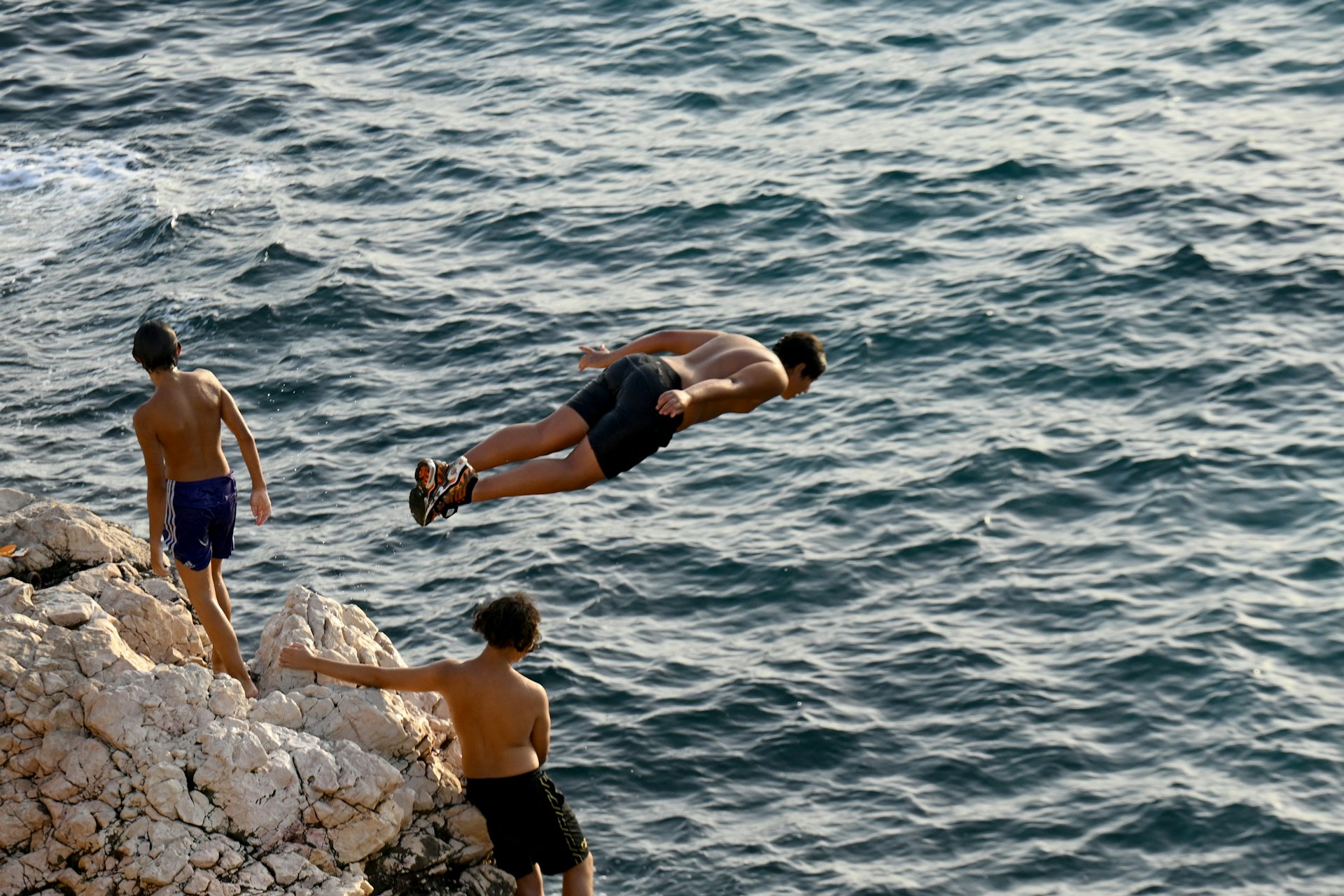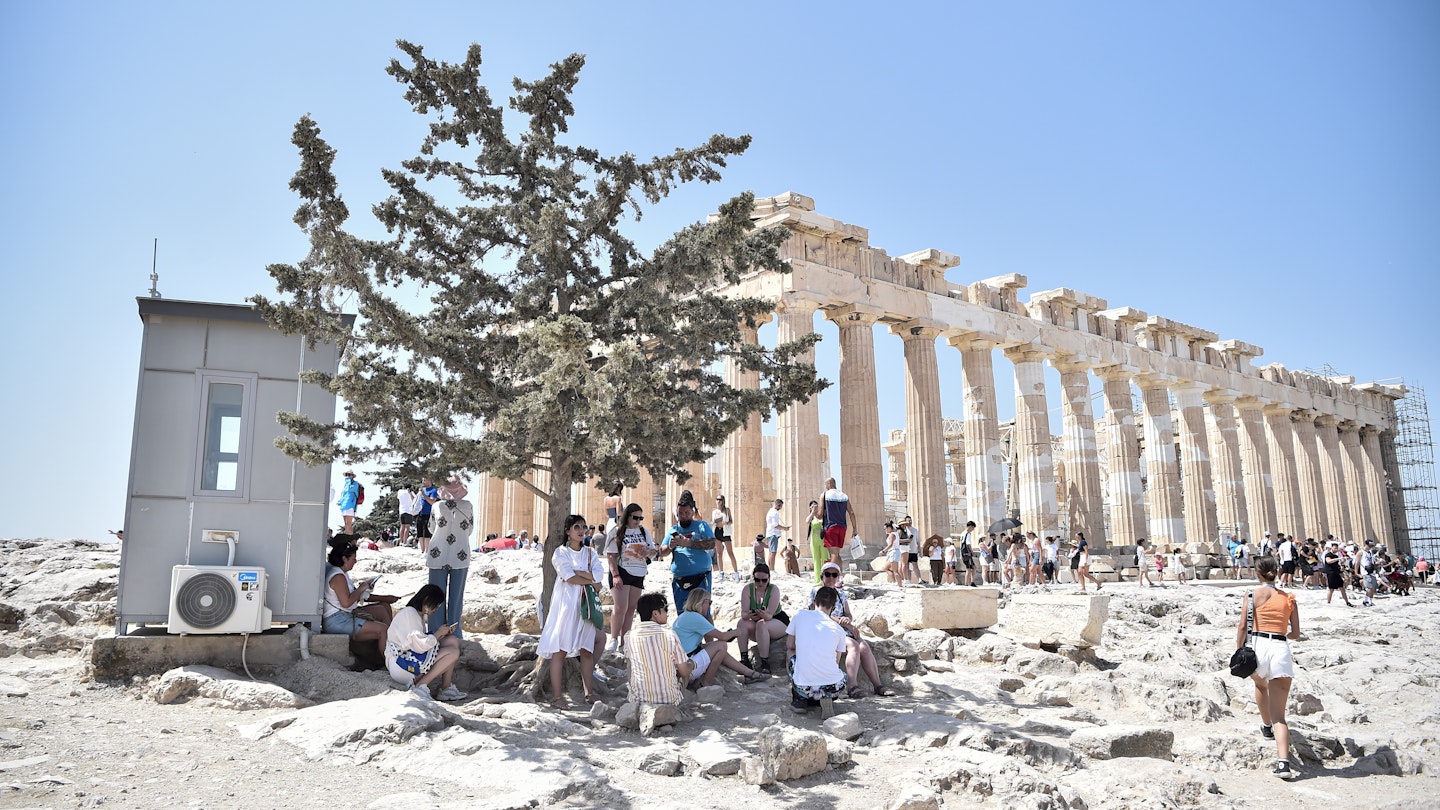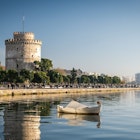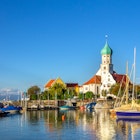Our writers all over Europe report on how visitors can cope with heat waves, torrential rain and other conditions in a summer of weird weather.
There’s no doubt that this is a summer of extreme weather conditions, from high temperatures to excessive rain and winds, all over the world.
And no place in the world is feeling this more right now than Europe, where over 600 million people are expected to spend part of their summer vacations. But what is it really like in the most-visited countries? What can you expect if you are heading to Europe in August?
We asked colleagues living in countries including Italy, Spain, Greece, Portugal, Ireland, UK, Turkey, Croatia and Finland to tell us how the weather has been this summer so far, what advice they would offer to someone coming in August and what the weather outlook seems like for the remainder of the season.

Rome feels hotter than the surface of the Sun
Virginia Digaetano lives in Rome, she is currently working on the next Lonely Planet Slovenia guidebook
I live in the center of Rome – and the weather in July in Italy has been, to put it scientifically, cuckoo bananas. I think it was hotter here than on the actual surface of the Sun. It was so hot that most days we didn’t have any other option than to close our shutters and hunker down from about 11am to 6pm.
The weather was anywhere from 34°C (93°F) up to 42°C (107°F) at the hottest – and it felt even hotter. It was definitely one of the hottest summers I’ve experienced in a decade living in Italy. We could go out in the early morning and evening, but it definitely wasn’t wise to be out in the middle of the day. We fortunately have an air conditioner that we used at night, yet were afraid of using during the day because of the risk of blackouts (which luckily didn’t happen). Everyone that I know who lives here changed their schedules when they could to cope with the heat.
The weather was the only thing anyone talked about. And then we talked about…how much people were talking about the weather.
It has cooled off considerably, though it’s still around 29–33°C (84–90°F). August has already been pretty hot, and there will almost certainly be a couple of heat waves in the month to come. But it looks like it won’t get to those dangerous temperatures that we saw in July, so I’ll take it.
For anyone coming to Rome, my advice is to pick just one thing to do each day – then not do it in the middle of the day. Get up early for a nice stroll somewhere while the temperatures are still pleasant, then get back to your accommodation by noon and stay there until at least 4pm. Then get back out and do something easy until the evening, when you find your aperitivo spot and enjoy a spritz (or three).
Don’t worry if you can’t see everything on your trip this summer. Rome has been here forever. Everything will still be here the next time you visit.

Ireland’s washout summer
Fionnuala McCarthy is a Lonely Planet editorial director and lives in Dublin
It has been a summer of records in Ireland. We had the hottest June since records began, followed by the wettest July recorded, and we are currently at 34 days of nonstop rain – and still counting.
“Above average” rainfall is a term we have become accustomed to hearing, with some of the showers feeling almost tropical, as the temperatures are relatively warm, averaging around 17°C (62°F).
The medium-range forecast for August offers little in the way of blue skies. Yet we have made our peace with the weather: the countryside is looking super lush, while summer festivals, concerts and sporting events have all gone ahead in wet and at times muddy conditions.
For anyone with plans to visit in August, it’s worth remembering what every Irish mammy will tell you: there’s no such thing as bad weather, just bad clothes. So pack appropriately.
Gusts of wind and flying trampolines in Finland
Paula Hotti lives in Helsinki, she has recently completed working on Lonely Planet's Finland guidebook
In July, most Finns spent holidays listening to the rain at their summer cottages. In fact, in many places, such as central Finland’s Jyväskylä, a single day’s downpour surpassed the usual monthly rainfall.
And it’s not looking any better for August. The first week of the month began with predictions of rain and storm-like gusts of wind – and they have come true. (There have even been reports of trampolines flying through the air!) Our last hope for a 30°C (86°F) day – pretty much the pinnacle of heat in Finland – is tentatively forecast for this Sunday.
But remember that Finland is large: whereas in the south you might reach a pleasant 25°C (77°F), in Lapland nightly temperatures can drop below zero even in August. Pack your bags accordingly: light layers and waterproof jackets come in handy.
I haven’t gotten to Sweden yet this summer, but I do know that in July Borås (a city near Gothenburg and the west coast) received the highest recorded rainfall since 1939.

Expect the unexpected in Croatia
Isabel Putinja lives in Istria, she is currently writing the new Experience Croatia book
In July we had temperatures reaching 38°C (100°F), which is pretty typical for summer. Last summer, we had a drought with water restrictions in place; this summer, it’s unpredictable weather that’s been making news.
We’ve had quite a few thunderstorms and hailstorms, much more than usual for this time of year. This caused some damage to crops locally, while in other parts of Croatia damage was much more extensive. In Slavonia in the east, strong winds blew off roofs, while in Zagreb fallen trees caused a lot of destruction and even a few deaths.
For August, temperatures are expected to hover around the high 20s°C (83- 84°F), bringing us some relief from the heat, while Dubrovnik and the south of the country will be higher at 33°C (91°F). However, forecasts warn a few scattered thunderstorms are still possible across Croatia. So far this summer, the theme seems to be: expect the unexpected.
Take a sweater for evenings in Portugal
Austin Bush now lives in Lisbon, after spending 20 years in Bangkok, contributing to Lonely Planet's Asia guidebooks
Portugal can get plenty hot during the summer – but we’re thankfully not experiencing the high temperatures seen in other parts of Europe right now.
In July, Lisbon averages a warm but tolerable 23.5°C (74°F), and this July was on par with that. Head up north, to Porto for example, and it’s a bit cooler; down south, in the Algarve, generally a bit hotter. You won’t find huge extremes.
Even if we do hit an especially warm stretch, which can happen in August, along the coast breezes from the Atlantic Ocean cool things significantly at night; temperatures as low as 18°C (64°F) are standard in Lisbon once the sun is down. If I’m going out on a summer night in Lisbon, I always grab a sweater or light jacket: sometimes I’m grateful I brought it; often I’m left holding it. In Porto or other points north, I usually end up wearing it.

France on drought alert, despite the rain
Ashley Parsons splits her time between the Luberon in Provence and near Chamonix in the Alps. She has just finished working on the next Provence & the Cote d'Azur guidebook
What’s been difficult about the weather in France this summer is that it has been changing very quickly.
In the Luberon, we’ve had more than a week where afternoon highs ranged from 30–37°C (86–98°F) – unusually hot for the region. This impacts how we plan our days: doing outdoor activities early, closing the shutters at 9am to keep the cool air inside, then going to the river in the late afternoon.
In the Alps, the weather was very hot the first half of July, followed by weeks of clouds and frequent rain, with day temperatures a modest 20°C (68°F°). My four-year-old nephew spent holidays in Brittany; he wore a hoodie most days and barely went swimming.
Despite intermittent rains, the majority of France is considered to be on high alert for drought, with more than 100 villages limiting water use. Hikers may have to ask at cafés or knock on doors to refill their water bottles rather than relying on public fountains. Météo France predicts that temperatures will rise quickly by August 7. I wouldn’t be surprised if the beaches on the Côte d’Azur are extra-full this year. So if you’re planning to reserve a chair at a beach club, you might want to do so in advance.

In the UK, temperatures have plunged by half from last year
Zara Sekhavati is a Lonely Planet destination editor for Africa and the Middle East, based in London
This July was one of the wettest on record for the UK. Temperatures were around 15°C (59°F), making it cooler than it should be at this time of year. This is in stark contrast to last summer, when an extreme heatwave saw temperatures rise to 40°C (104°F). Last summer we were advised to stay indoors from 11am to 3pm, and close curtains and blinds.
In early August, the UK is set for more showers, with temperatures reaching a mere 20°C (68°F). At half the temperature from this time last year, a rainy summer is what lies in store.
Anyone planning to come to the UK in August should definitely pack an umbrella; a rain poncho is a good idea, too. I wore one of these at an outdoor concert a couple of weekends ago – without that, I would have been drenched.

Turkey faces ongoing heat waves
İsmet Ersoy lives in İzmir, he is currently working on the next edition of Türkiye bluepsine guidebook
This summer, all of Türkiye is battling high temperatures. Since mid-July, temperatures have been around 40°C (104°F) throughout the country, especially in the coastal regions.
İzmir, where I live, has affected by this heat wave more than most. People are staying indoors, going to air-conditioned places or to the beaches to cool off.
Authorities say that the high temperatures experienced in July will continue in August. People in the Aegean and Mediterranean regions will be the ones most affected by the hot weather across the country for the coming weeks.
Anyone traveling to Turkey in August should definitely pack thin cotton and light-colored clothes, and bring a handheld fan that they can carry during the day.
A record-breaking heat wave in Greece
Helen Iatrou is based in Athens, she has co-authored Lonely Planet’s Greece guides
An early-July island jaunt was just what I needed to deal with a 15-day, record-breaking heat wave that kept me indoors with A/C throughout the second half of the month. As temperatures soared to around 42°C (107°F) on my balcony in southern Athens, I slipped out only for the rare walk.
Locals and visitors jammed beaches along the coast – which is always a few degrees cooler than the city center – while others retreated to museums and malls. The heat proved so extreme that access to the Acropolis was temporarily limited.
Other parts of the country, like Gythio, saw highs of up to 46.4°C (115°F), while sea-surface temperatures in the Ionian Sea rose to 30°C (86F). Sweltering is an understatement.
Heading to Greece in August? Keep an eye on weather reports, and venture out only in the morning and evening. Bring plenty of water and shade – and skip the fried calamari.

A milder summer in Madrid
Fran Sevillano is a product manager at Lonely Planet, and lives in his native Madrid
Madrid in summer is generally perceived as hotter than other places in Spain, but I think that’s mostly due to its being a large city, full of cement and asphalt. It’s a place that never really cools down during the night, making it harder to sleep.
Compared to other summers, the heat has been mild during the past two months. It’s not unusual to reach 40ºC (104 ºF) for days at a time here – though we haven’t gotten quite there this summer. Spring lasted a bit longer than usual, and when the heat arrived, it didn’t stay for as long or reach the highs of prior years.
Combined with the fact that travel is back in full force this year, there is a more positive vibe than in past years. We Spaniards love our summer, and everyone is squeezing every bit of it this year. If you want to visit Madrid or any other region in Spain, now would be a great time to do so.











